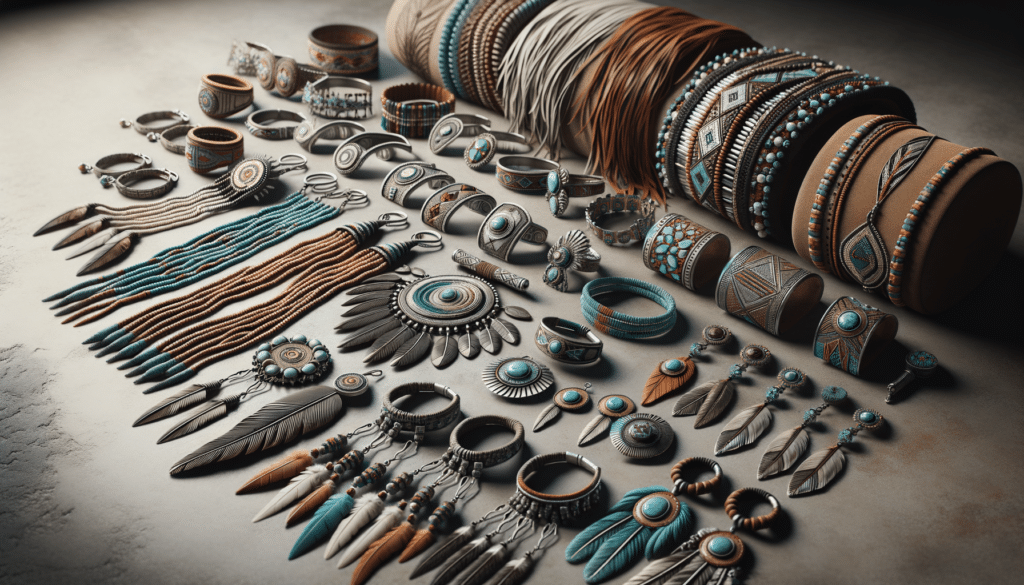Introduction to Handcrafted Native Jewelry
Handcrafted native jewelry is a remarkable testament to the artistic capabilities and cultural heritage of indigenous communities. These pieces are not just accessories but are infused with stories, traditions, and symbolism that have been passed down through generations. The intricate craftsmanship involved in creating these jewelry pieces reflects a deep understanding of materials and techniques that are unique to each community.
Artisans often use natural materials such as turquoise, silver, coral, and shells to create stunning pieces that are both beautiful and meaningful. Each material holds specific significance, with turquoise often symbolizing protection and healing, while silver is valued for its versatility and strength. The combination of these materials results in jewelry that is not only aesthetically pleasing but also rich in cultural significance.
Moreover, the process of creating handcrafted jewelry is labor-intensive, requiring skills that are honed over years of practice. This dedication to craft ensures that each piece is unique, with no two items being exactly the same. This individuality is a significant aspect of native jewelry, making each piece a work of art in its own right.
Symbolic Jewelry with Cultural Roots
Symbolic jewelry holds a special place in many cultures, serving as a means of expressing identity, beliefs, and values. In Native American communities, jewelry is often imbued with symbols that carry deep cultural meanings. These symbols can represent various aspects of life, such as connection to nature, spirituality, and community.
For instance, the use of animal motifs like the eagle or bear can signify strength, freedom, and protection. Geometric patterns, often seen in beaded jewelry, can represent the interconnectedness of life and the universe. These symbols are not chosen at random but are deeply rooted in the cultural narratives and spiritual beliefs of the people who create them.
Wearing symbolic jewelry is a way for individuals to connect with their heritage and express their identity. It is a form of communication that transcends words, allowing wearers to carry their culture with them wherever they go. This makes symbolic jewelry not only a personal adornment but also a powerful cultural statement.
Authentic Designs Inspired by Tradition
Authentic designs in native jewelry are inspired by centuries-old traditions that have been preserved and adapted over time. These designs are characterized by their intricate patterns, vibrant colors, and the use of traditional materials. The authenticity of these designs lies in their adherence to traditional methods and their ability to convey the stories and values of the communities from which they originate.
One of the key features of authentic native jewelry is its ability to adapt while maintaining its traditional essence. As artisans create new pieces, they often incorporate contemporary elements that appeal to modern tastes without compromising the cultural integrity of their work. This balance between tradition and innovation ensures that native jewelry remains relevant and continues to be appreciated by new generations.
Collectors and enthusiasts of native jewelry value authenticity not only for its aesthetic appeal but also for its cultural significance. Authentic pieces are seen as a way to honor and preserve the rich heritage of indigenous communities, making them highly sought after in the world of art and fashion.
The Craftsmanship Behind Native Jewelry
The craftsmanship involved in creating native jewelry is a skill that is often passed down through generations within families and communities. This craftsmanship is characterized by attention to detail, precision, and a deep understanding of the materials being used. Artisans spend years perfecting their techniques, learning from elders and peers, and experimenting with new methods.
One of the most remarkable aspects of native jewelry craftsmanship is the use of traditional tools and techniques. Many artisans continue to use methods that have been employed for centuries, such as hand-beading, metal stamping, and stone inlay. These techniques require patience and skill, resulting in pieces that are not only beautiful but also durable and long-lasting.
The dedication to craftsmanship is evident in every piece of native jewelry, from the simplest beadwork to the most elaborate silverwork. This commitment to quality ensures that each piece is a testament to the artisan’s skill and a reflection of their cultural heritage.
Conclusion: Embracing Tradition Through Jewelry
Native American jewelry is more than just an accessory; it is a representation of cultural identity, artistic expression, and historical continuity. Each piece tells a story, connecting the wearer to a rich heritage that spans generations. By embracing native jewelry, individuals can appreciate the artistry, symbolism, and cultural significance that these pieces embody.
For those interested in exploring native jewelry, it is essential to seek out authentic pieces that honor the traditions and craftsmanship of indigenous communities. Supporting artisans who create these works not only helps preserve their cultural heritage but also ensures that these beautiful traditions continue to thrive.
In conclusion, native jewelry offers a unique opportunity to connect with history and tradition, allowing wearers to carry a piece of cultural legacy with them wherever they go. Whether as a collector, enthusiast, or wearer, embracing native jewelry is a way to celebrate and honor the timeless beauty and craftsmanship of these exceptional pieces.


